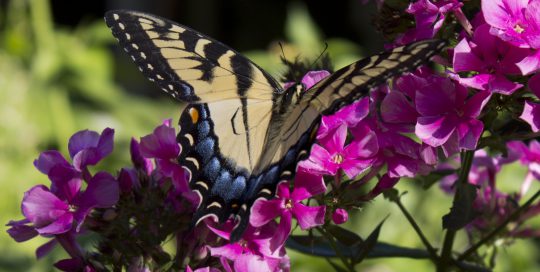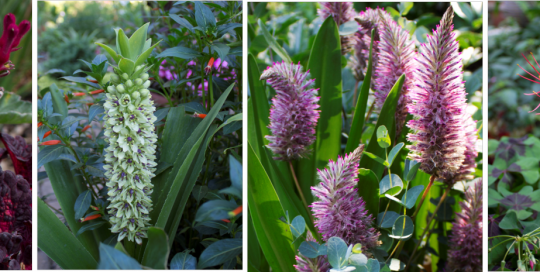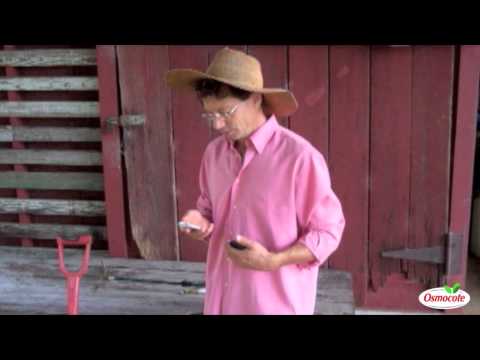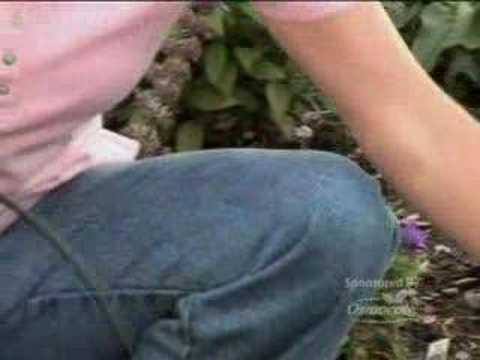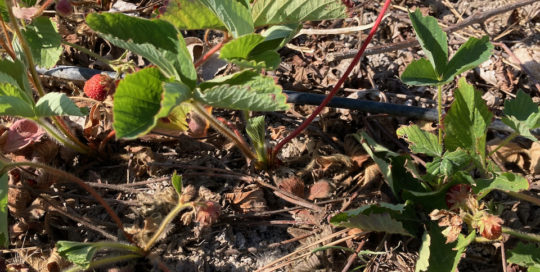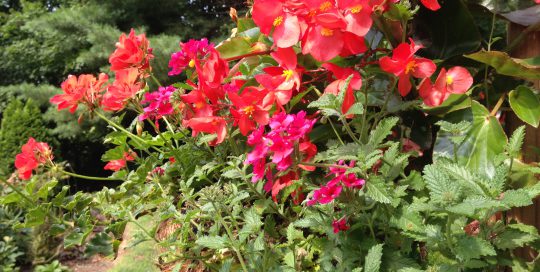Top Ten Tips to Help your Plants Survive the Summer Heat
Mother Nature wants us to conserve water. However, she also needs us all to add more blooming plants to our garden for the sake of our birds, bees and other pollinators. A landscape with a variety of trees, shrubs, perennials and annuals is also more attractive to native wild life. It helps to shade the house and soil and conserve energy through the use of less air conditioning.
Here are Ten Tips that will help your plants survive the summer heat:
1. Use mulch on top of your soil.
Mulch is like a frosting that sits on the surface of the soil to seal in moisture and shade the soil. Organic mulches such as compost, manure, and bark chips will improve your soil over time. Gravel and low growing sedums can also be used as mulch. As a wonderful bonus, mulch on top of your soil will also help to block and smother weeds.
2. Water once, then water twice.
Turn off the sprinkler for half an hour partway through your watering session. Allow the moisture to soak into the top few inches of your soil. Now turn on the sprinkler again and finish up watering. By allowing the first watering session to soak in, you’ll be taking advantage of capillary action so that the second course of water will be pulled down deeper to the roots where it is needed.
3. Place saucers under your container gardens to catch drainage water.
If you use clay pots they will be able to absorb some of this moisture as the clay dries out. If you pots are plastic or ceramic the plant roots may still be able to sneak out of the drainage hole and suck up some of the water left in the saucer.
4. Place potted plants under your hanging baskets.
This way the drainage water from your hanging pots will drain into the thirsty potted plants below – you’ll be watering two plants at the same time.
5. Choose more drought resistant plants the farther away you go from the house.
Thirsty plants should be close to the house or patio – this makes it easy to use recycled or gray water left over from water bottles, cooking or rinsing vegetables. The trees and shrubs that adapt to your climate without the need for additional water should be the ones you place farthest from the water source – in areas where the hose doesn’t reach.
6. Water deep – and water less often to train the plant roots.
Plants are smart. They send their roots in search of water in whatever direction the water is waiting. This means the roots will stay on the surface of the soil if you water often and the water is now allowed to soak into the soil. If you want deeply – by letting the hose run slowly for 20 to 30 minutes in an area or by using a sprinkler or soaker hose so that the top one foot of soil is saturated, then you may not need to water again for a week or more. This will cause the roots to go deeper in search of moisture as the top few inches of soil becomes dry on hot summer days.
7. Leave the clippings on your lawn when you mow.
Grass clippings not only return nitrogen to the soil as they decompose but they act like a mulch to shade the soil.
8. Mow high.
Allowing your lawn to grow a bit taller during hot weather helps to shade and cool the soil. Try to remove no more than one third of the grass blade when you cut. Let your grass grow to three inches high, than remove one third from the top so the blades are still 2 inches tall.
9. Add organic matter to your soil.
Compost and manures, sawdust, wood shavings, grass clippings these are all forms of organic matter that will act like a sponge to grab and hold moisture once they are mixed into the soil. Sandy soil will benefit the most from the water holding capacity of organic matter.
10. Choose the right plants for your climate.
Some plants are just better adapted to hot summers and dry soil. Sedums and succulents that hold moisture in their fat and fleshy leaves, rosemary and thymes that resist drought with their tiny leaves, and plants with gray foliage due to the fine hairs that cover the surface of their leaves are all examples of plant material that are drought and heat resistant.
Summer Vacation? Tips for thirsty plants while you are away:
Summer time means weekends at the beach and camping trips for in the mountains. Then there’s those dream vacations that may take you away for a week or more. If you don’t want to return home to wilted plants here are a few tips to keep your plants hydrated while you are gone.
1. Train a trusted friend or neighbor to water for you.
The secret to a successful plant nanny is to mark the plants that need daily water during hot weather – such as hanging baskets and containers in the sun so that they won’t be missed or forgotten. Buy a packet of small American flags and poke these into containers that need water every few days, with two flags into the plants that are very thirsty and might need a drink every day. Bonus: Flags decorating the patio will make it appear like you are still home and ready to party.
2. Group your pots together in the shade.
Better yet set them inside a shallow plastic wading pool and add a few inches of water to the pool right before you leave. How long your plants can go sitting in a pool of water depends on your weather and the type of plant – cannas, fuchsias and many perennials with thrive with soggy bottoms – sedums, geraniums and many herbs can only handle three or four days of sitting in water.
3. Make your own self-watering, leaky, plastic water bottle.
These are easy to make. Cut the bottom off of a plastic bottle so that when turned upside down, the bottle is open like a vase. Leave the cap screwed onto the top of the bottle. The size of bottle should correspond to the size of the planter and length of time you will be away.
Next, use a small push pin to poke just two tiny holes near the neck or top of the bottle. The top of the bottle, with the cap still screwed on will go into the soil, head first, so you want the pin holes to be buried in the soil. Finally, make room with a trowel for the bottle to be inserted into the center of your container and fill the newly cut opening with water. The water will leak ever so slowly from the pin holes that are buried in the soil. As the soil dries out, osmosis will pull more moisture from the pin holes in the plastic bottle to hydrate you plants.
4. Best way to water plants while you are way
Take the plunge and invest in a drip system with an automatic timer. You can even purchase watering devices that have a rain sensor to turn off the watering system on wet days.
Gardeners shouldn’t have to stay home and meet the demands of thirsty plants – with a little planning you and your garden can both enjoy a little vacation.

